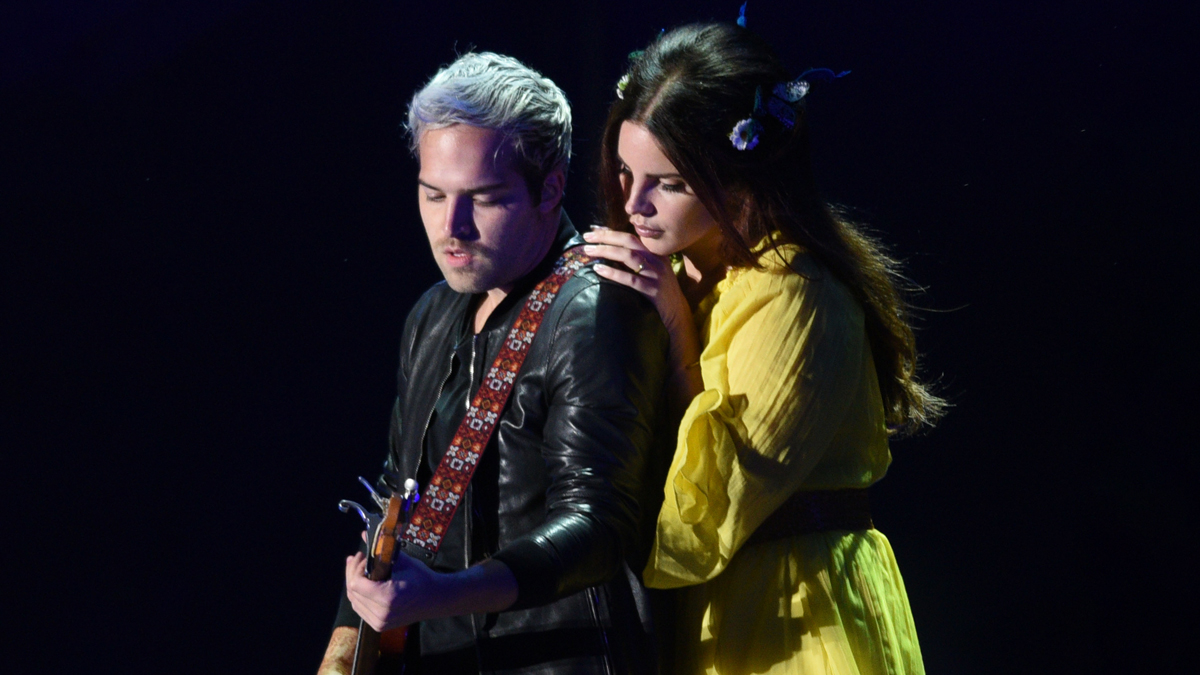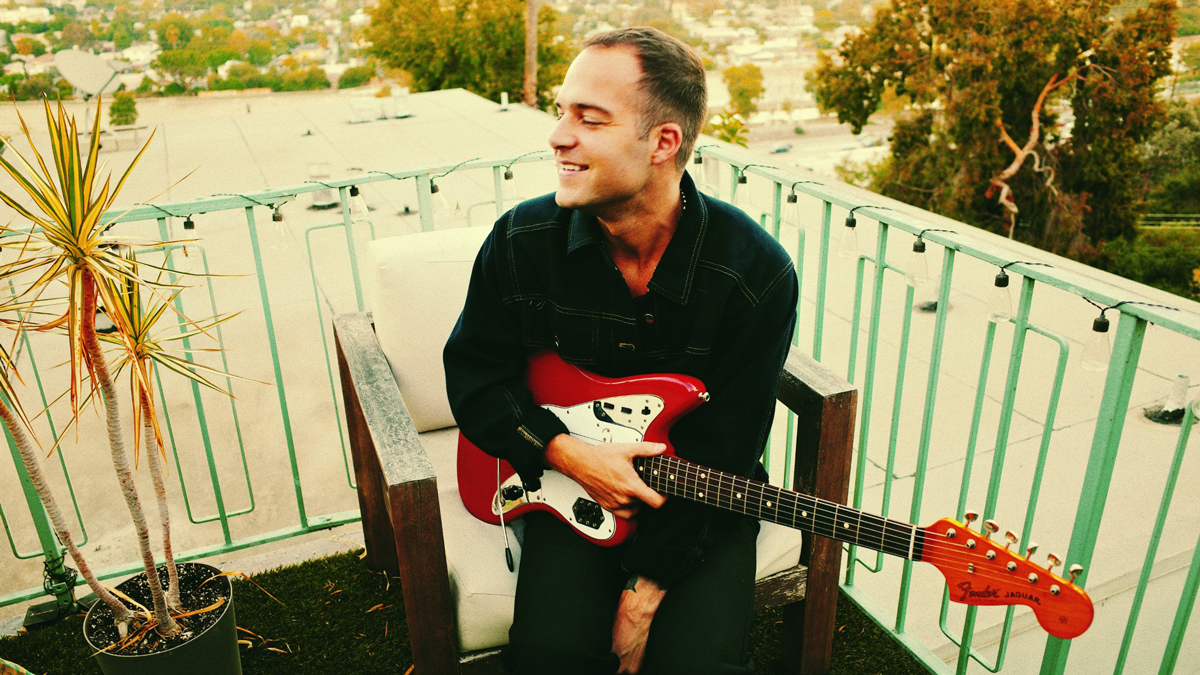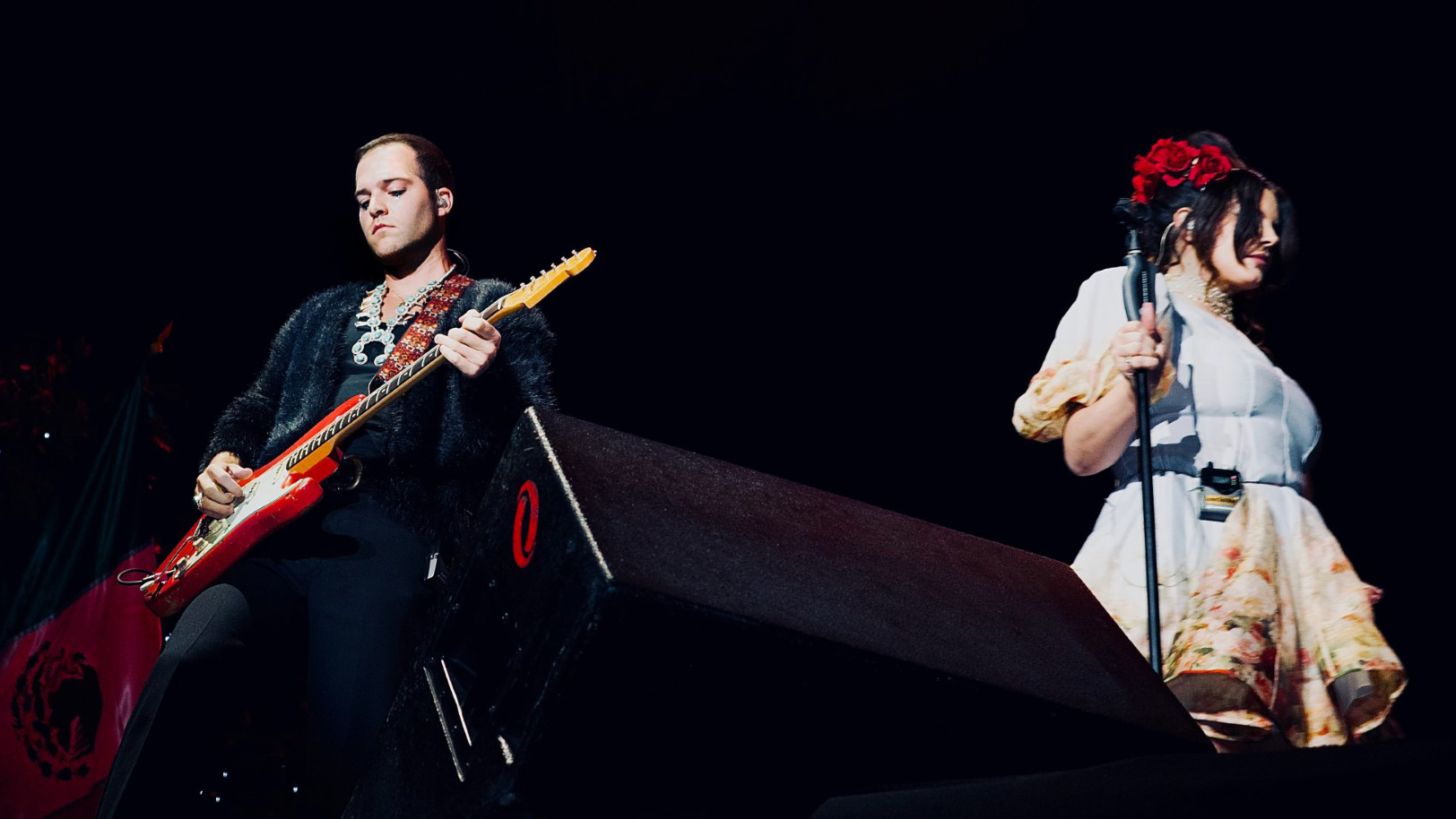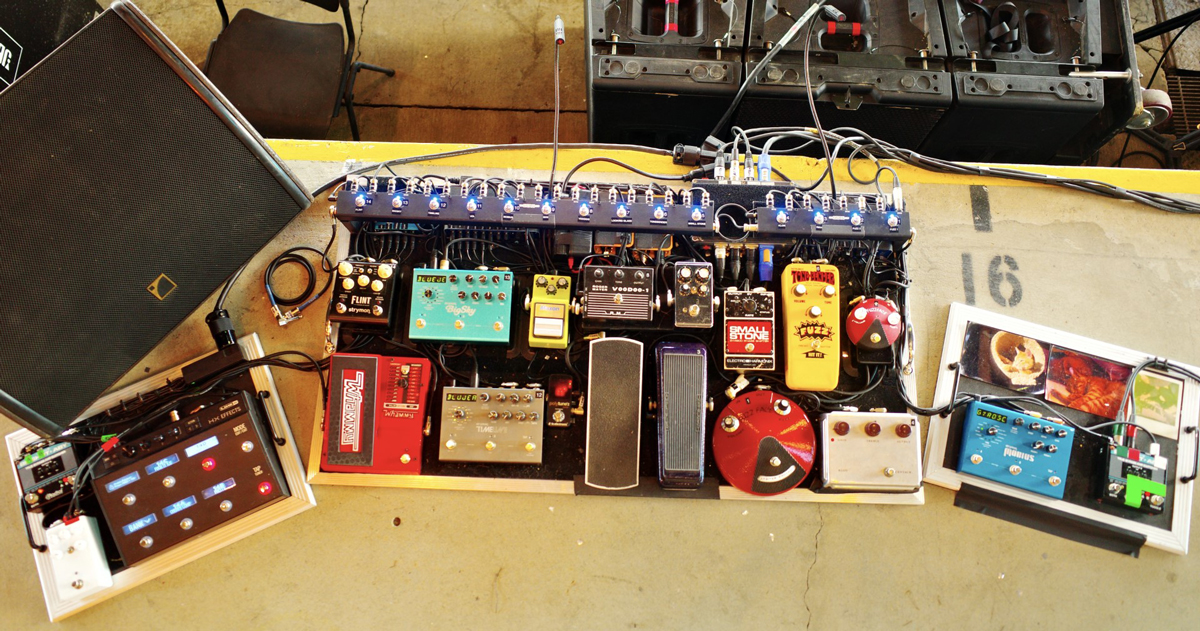“I showed the Strymon BigSky to Lana, and she was like, ‘Oh, we need that.’ I plugged into a 100-watt Marshall, and the riff came out in 10 seconds”: Lana Del Rey guitarist Blake Lee thrives on making his Strat sound like anything but a guitar
The boundary-breaking guitarist – aka Blake Stranathan – had an unlikely route to session guitar success. He reveals how gear shaped his collaborations with one of the biggest singer-songwriters of our age, his theory on how “the less paint or lacquer on the guitar, the better it will sound” and why the tone of a real Klon can’t be replicated

The music of Lana Del Rey, for all its textured and vintage-inspired glory, is brimming with undertones of guitar goodness. And if you've seen Del Rey live over the past decade, you'd know that the sounds creeping from the depths of tunes like Cruel World and Pretty When You Cry come from the Strat-wielding hands of Blake Lee.
"When I'm performing with Lana, it has always felt like a true band up there," Lee tells Guitar World. "And the guitar plays a major role in that. From an audience perspective, as far as what I'm trying to do up there, it's about translating to the audience the energy that I'm trying to get from one single note or translating an emotion."
As for how Lee does that – especially given the sparse nature of the compositions he's carrying out, he says, "I'm always trying to make that one note feel as strong as a bunch of notes, which is interesting as I've always felt the guitar is one of the most expressive instruments there is. But being out at the front of the stage with Lana, it's easy to engage with the audience that way."
For Blake Lee (who is also credited as Blake Stranathan), the guitar isn't just an instrument – it's a true means of expression. As a player, though, Lee isn't muddying the waters; instead, he's softly spoken in his note choices, making each one count.
"I've been working on an ambient record," he says. "It's pretty experimental, and I use my guitar and gear to manipulate sounds, create moods, atmospheres, and textures."
As for where he sees himself going, aside from continuing with Del Rey, Lee plans to push the boundaries of his instrument, using the guitar in ways that are decidedly un-guitar-like: "My goal is for the listener to escape into these little sonic worlds," he says. "And since my guitar is my best instrument, I use it to achieve those moods.
"I'm fascinated by guys like Kevin Shields, Daniel Lanois, and Jonny Greenwood. These are players who can compose in a score-like way along the same lines as the music I'm creating."
Get The Pick Newsletter
All the latest guitar news, interviews, lessons, reviews, deals and more, direct to your inbox!
In this exclusive interview, Lee details his early inspirations, and how he conjured six-string magic on some of Del Rey's most iconic tracks.

What led you to pick up the guitar?
"I started as a drummer from about age three through high school, but the guitar was something I naturally gravitated toward. I had a calling for it and was able to pick it up quickly by playing along to albums.
"As far as influences early on, [Jimi] Hendrix was and continues to be a main influence creatively and flow-wise through the energy he gave off as a guitarist. I played along to his records, Stevie Ray Vaughan, ‘60s rock, and grunge growing up. Those were the most significant influences as I sank my teeth into the guitar."
Tell me about your early gigs before joining Lana Del Rey's band.
"I went to Berklee [College] for a year and a half, and ended up doing an MTV reality show called Making His Band, where I competed to play guitar for Sean Combs [P. Diddy]. That got me into the world of R&B and hip-hop guitar, with some other artists, and I got to play with some incredible musicians."
From there, how did you end up playing alongside Lana?
"Through networking, gigging, and exposure from the Making the Band thing, I linked up with a keyboard player [Byron Thomas], now my co-music director with Lana. I met him through several gigs, and he reached out to me, asked if I was interested [in playing with Lana], and I came down to rehearsal. This was before she signed a record deal, so it was a small rehearsal space, but I was intrigued, and she caught my ear immediately."

What about her style appealed to you?
"I was drawn to the atmosphere and the textures within her music. I sensed and could feel a retro quality, and my parents raised me on '60s music, which holds a dear place in my heart. So, from the jump, I felt connected to her because she seemed like a real-deal artist and songwriter. That was very attractive to me."
Did your background at Berklee impact your approach once you joined Lana's band?
"I wasn't there long enough to pick anything up and apply it theory-wise. I still can't, and never could, sightread music, even while I was there. But I got the most out of playing with and being around an assortment of high-level musicians, whether that was bluegrass players, gospel players, or other players on your dorm room floor. My approach has always come from a feel-based place; I try to come from an absence of thought, and the goal is always to be free from thought."
Down the line, you played a big role in the writing and recording of Cruel World from Ultraviolence. How did that track come together?
"We were at Electric Lady Studios working on the Ultraviolence record – a dream come true and still one of the highlights of my life. I had recently bought a reverb pedal, and I showed it to Lana in the studio, and she was like, 'Oh, we need that.' There was magic in those studio walls, though, and when it came to the Cruel World riff, I plugged into the 100-watt Marshall that was there, and the riff just came out within 10 seconds.
"I was drawn to it, and Lana began freestyling over it. And luckily, everything was still hooked up to record as we'd been packing up. We ended up doing it in one or two takes, and then Dan Auerbach went on to produce that song. We also recorded Guns and Roses there and ended up recording Flipside back in L.A.."
You mentioned a reverb pedal – which one was it? And what guitar did you pair with it?
I've gotten the chance to write with other songwriters and singers, but nobody has come close to the experience with Lana regarding how natural it is. It's like it's right there for the taking; all the magic is right there
"It was a [Strymon] BigSky, which I still use to this day. As for the guitar, I believe that it was an old vintage Telecaster that was at Electric Lady. It was like an in-house guitar. It wasn't my own personal one."
Was your experience putting together Pretty When You Cry similar gear and inspiration-wise?
"With that one, I was trying to make the most of being at Electric Lady. So, I showed up earlier than Lana did with the engineer, Phil Joly. I wanted to play guitar in that big live room and enjoy the space. And while I was doing that, Lana walked in with a coffee, and she immediately heard something that I was doing, grabbed the microphone, and went into the control room.
"We jammed and recorded the structure, and the basis of Pretty When You Cry came together in one or two takes. Lana is a very prolific writer, and I've never really worked with anyone who does it the same and as effortlessly as she does."
That approach must be pretty inspiring for you as a guitar player.
"It absolutely is. Through writing with Lana, I've gotten the chance to write with other songwriters and singers, but nobody has come close to the experience with her regarding how natural it is. It's like it's right there for the taking; all the magic is right there. It's an ideal scenario when trying to make the best art possible."
Like many solo artists, Lana uses all sorts of players on her albums. Do you play it straight live or put your spin on things?
"It's a hybrid of both. Sometimes, it's a challenge when there are multiple guitar parts, and I'm trying to incorporate those into one, but I do put my spin on things. But it comes down to serving the song in the best way possible and having an art-first approach. I often create atmospheres and textures and use the guitar as a tool.
"It’s kind of like a paintbrush sonically rather than just quintessential guitar playing. I like the idea of blurring the lines of the instrument to where you can't even tell it's a guitar. Sometimes it’s straight into a 100-watt Marshall, other times its different reverb pedals chained into each other and things like that. It's about creating moods while always serving the song."
A post shared by Blake Lee (@blake_lee)
A photo posted by on
Some of Lana's early songs have little to no guitar. How do you approach those?
"It's nuanced, especially in her early work, where there's little guitar. There's more guitar on her newer records but less on the earlier ones. But I play through a lot of pedals, and I'm inspired by pedals and experimenting with sounds.
"I approach those early songs by experimenting with different combinations, making the guitar sound like it's not a guitar, and using it as a true form of expression. That’s naturally appealing to me, and it's appealing within Lana's music. So, it's about blending those sounds, not getting in the way, and creating something that serves the song."
Aside from the BigSky, what are a few of your go-to pedals that you use to accomplish that?
The Klon hasn't left my 'board, even when I've tried to remove it. It does something that can't be replicated with something else
"I have a few '60s Fuzz Face pedals, and I also have a silver Klon that I leave on for most shows. The Klon hasn't left my 'board, even when I've tried to remove it. It does something that can't be replicated with something else. And then there's the [Strymon] TimeLine [Multi-Delay], which is very versatile and has been on my 'board since around 2015. And I have another Strymon pedal, the Flint Tremolo & Reverb, which is great for '60s-type sounds."
And what sorts of new pedals tend to catch your ear?
"As far as a new pedal catching my ear, it must have an immediate calling or offer some immediate inspiration. The best pedals usually do that where as soon as you plug it in, you're like, 'Oh, this is going to spark an idea or a little riff.' I recently got a custom pedal based on the reverse reverb settings from an SPX90 like Kevin Shields uses. He is another of my biggest influences."

I've often seen you playing a Strat. What makes that your primary weapon of choice?
"I've always been a Strat guy. I know how to manipulate Strats better than any other guitar as far as the pickup selectors, tone, and volume go. I can make a Strat sound like a different guitar, especially with the tremolo arm. I've used Strats a lot in Lana's music and in general."
Do you prefer vintage or new guitars?
"I have some vintage ones but also some Custom Shop ones. I've found with guitars that the less paint or lacquer on the guitar, the better it will sound. And if a guitar sounds good unplugged, the chances are that it will sound even better when plugged into an amp as far as resonance and feel. But I have found that many new guitars are just covered in paint, which clogs up the wood, making it sound choked."
How would you describe the guitar player you are today versus who you were, and what brought about that shift?
"Wow, that's a very big question. Experience, experimentation, and the idea that there are no rules to art and music have played a large role. The best music and art everybody loves has been created through experimentation and trying to figure things out beyond limitations.
"So, nowadays, I'm leaning into getting the most out of one note possible and translating that to an audience. And to come from an inspired place, whereas 10 years ago, I was trying to chase gigs and maybe trying to impress. I'm trying to be as expressive and creative as possible and always come from an honest place."
Andrew Daly is an iced-coffee-addicted, oddball Telecaster-playing, alfredo pasta-loving journalist from Long Island, NY, who, in addition to being a contributing writer for Guitar World, scribes for Bass Player, Guitar Player, Guitarist, and MusicRadar. Andrew has interviewed favorites like Ace Frehley, Johnny Marr, Vito Bratta, Bruce Kulick, Joe Perry, Brad Whitford, Tom Morello, Rich Robinson, and Paul Stanley, while his all-time favorite (rhythm player), Keith Richards, continues to elude him.



![[from left] George Harrison with his Gretsch Country Gentleman, Norman Harris of Norman's Rare Guitars holds a gold-top Les Paul, John Fogerty with his legendary 1969 Rickenbacker](https://cdn.mos.cms.futurecdn.net/TuH3nuhn9etqjdn5sy4ntW.jpg)







